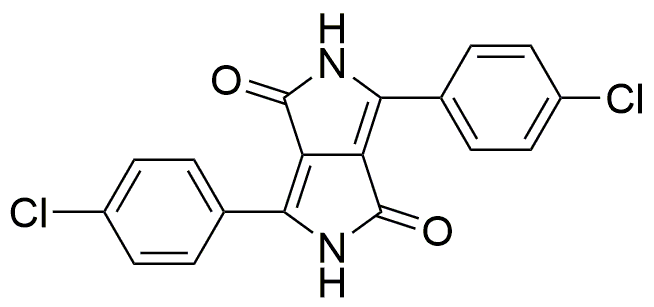Pigment red 254 is widely utilized in research focused on:
- Art and Design: This pigment is favored for its vibrant red color, making it ideal for artists and designers looking to create bold and striking visuals in paintings, textiles, and graphic designs.
- Coatings and Inks: It is extensively used in the formulation of high-performance coatings and inks, providing excellent color strength and durability, which is crucial for outdoor applications.
- Plastics and Polymers: The compound is incorporated into plastics, enhancing their aesthetic appeal while also improving UV stability, making it suitable for consumer goods and automotive parts.
- Cosmetics: Due to its non-toxic nature, it is utilized in cosmetic formulations, offering vibrant color options for products like lipsticks and nail polishes while ensuring safety for users.
- Research and Development: In laboratories, it serves as a standard reference for colorimetric studies and is used in the development of new materials, helping researchers innovate in fields like material science and chemistry.
General Information
Properties
Safety and Regulations
Applications
Pigment red 254 is widely utilized in research focused on:
- Art and Design: This pigment is favored for its vibrant red color, making it ideal for artists and designers looking to create bold and striking visuals in paintings, textiles, and graphic designs.
- Coatings and Inks: It is extensively used in the formulation of high-performance coatings and inks, providing excellent color strength and durability, which is crucial for outdoor applications.
- Plastics and Polymers: The compound is incorporated into plastics, enhancing their aesthetic appeal while also improving UV stability, making it suitable for consumer goods and automotive parts.
- Cosmetics: Due to its non-toxic nature, it is utilized in cosmetic formulations, offering vibrant color options for products like lipsticks and nail polishes while ensuring safety for users.
- Research and Development: In laboratories, it serves as a standard reference for colorimetric studies and is used in the development of new materials, helping researchers innovate in fields like material science and chemistry.
Documents
Safety Data Sheets (SDS)
The SDS provides comprehensive safety information on handling, storage, and disposal of the product.
Product Specification (PS)
The PS provides a comprehensive breakdown of the product’s properties, including chemical composition, physical state, purity, and storage requirements. It also details acceptable quality ranges and the product's intended applications.
Certificates of Analysis (COA)
Search for Certificates of Analysis (COA) by entering the products Lot Number. Lot and Batch Numbers can be found on a product’s label following the words ‘Lot’ or ‘Batch’.
Numéro de catalogue
Numéro de lot/série
Certificates Of Origin (COO)
This COO confirms the country where the product was manufactured, and also details the materials and components used in it and whether it is derived from natural, synthetic, or other specific sources. This certificate may be required for customs, trade, and regulatory compliance.
Numéro de catalogue
Numéro de lot/série
Safety Data Sheets (SDS)
The SDS provides comprehensive safety information on handling, storage, and disposal of the product.
DownloadProduct Specification (PS)
The PS provides a comprehensive breakdown of the product’s properties, including chemical composition, physical state, purity, and storage requirements. It also details acceptable quality ranges and the product's intended applications.
DownloadCertificates of Analysis (COA)
Search for Certificates of Analysis (COA) by entering the products Lot Number. Lot and Batch Numbers can be found on a product’s label following the words ‘Lot’ or ‘Batch’.
Numéro de catalogue
Numéro de lot/série
Certificates Of Origin (COO)
This COO confirms the country where the product was manufactured, and also details the materials and components used in it and whether it is derived from natural, synthetic, or other specific sources. This certificate may be required for customs, trade, and regulatory compliance.


